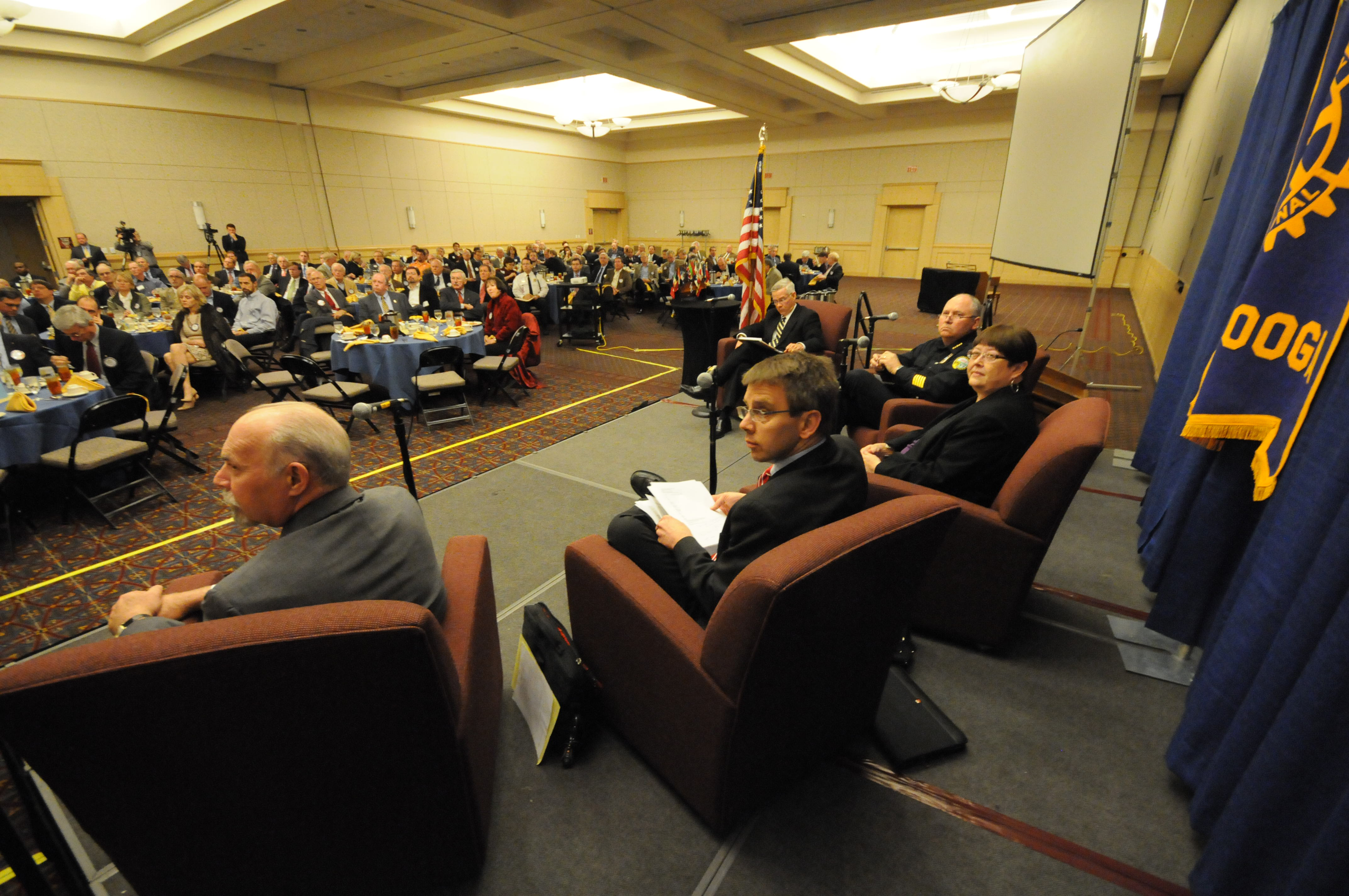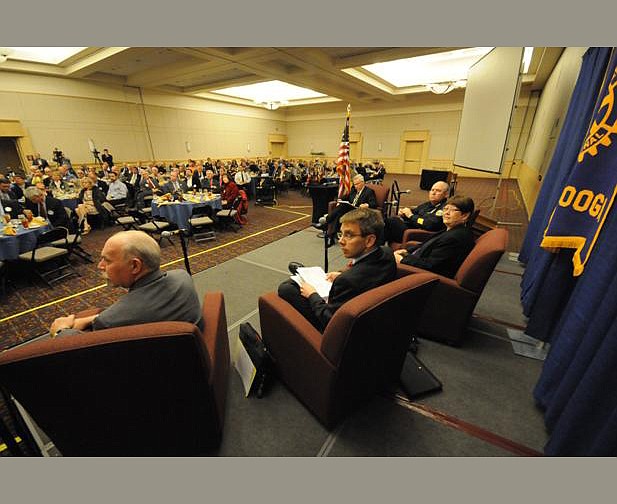Panel seeks to sort Chattanooga crime truth from perception
Friday, January 1, 1904
 The Rotary Club listens to a group of panelists discuss "Crime in Chattanooga: Perception vs. Reality" on Thursday at the Chattanooga Convention Center. The panelists included Hamilton County District Attorney Bill Cox; Kenneth Chilton, president of The Ochs Center for Metropolitan Studies; Helen Eigenberg, department head of the criminal justice program at the University of Tennessee at Chattanooga; and Chattanooga Police Chief Bobby Dodd. Tom Griscom was moderator.
The Rotary Club listens to a group of panelists discuss "Crime in Chattanooga: Perception vs. Reality" on Thursday at the Chattanooga Convention Center. The panelists included Hamilton County District Attorney Bill Cox; Kenneth Chilton, president of The Ochs Center for Metropolitan Studies; Helen Eigenberg, department head of the criminal justice program at the University of Tennessee at Chattanooga; and Chattanooga Police Chief Bobby Dodd. Tom Griscom was moderator.While some people believe crime is a growing problem, local experts in crime and justice issues said Thursday that crime actually has gone down in the last decade.
What's changed is that people are more aware of crimes because of better technology and media coverage, the officials said at a Thursday panel discussion hosted by the Rotary Club of Chattanooga.
The discussion followed a video introduction showing some residents' perceptions of crime as well as data on shootings.
"Eighty to ninety percent of our violent crime is targeted. The rest of it is domestic. Some of it is self-inflicted," Chattanooga Police Department Chief Bobby Dodd said. "Most of the violence we have is gang member on gang member, drug dealer on drug dealer, or some combination of that."
Chattanooga had 100 shootings in 2012 with 117 victims, according to a database kept by the Chattanooga Times Free Press. Chattanooga police say they counted 88 shootings with 106 victims, including 17 that were ruled homicides. The discrepancy couldn't be explained Thursday.
That compares with Huntsville, Ala., a city with a similar-size population that had only 26 shootings last year, according to the video introduction produced by WTVC-NewsChannel 9. However, the Huntsville Police Department told the Times Free Press on Thursday there were actually 57 shootings and 12 deaths last year,
Helen Eigenberg, professor and department head for the criminal justice program at the University of Tennessee at Chattanooga, said Tennessee Bureau of Investigation data shows that 52 percent of violent crimes occur in domestic situations.
"Those are crimes that are actually much more preventable than the average crime because they are known to people, because they have a history -- a track record. You can kind of see them coming. There have actually been some successful strategies to address domestic violence," she said.
Aside from discussing perceptions of crime, panelists discussed possible solutions.
Hamilton County District Attorney Bill Cox said more needs to be done in the prison system to reduce the rate of repeat offenders.
"We put them in a cage and warehouse them as long as we can until they come back to the community," he said. "One thing that's needed, I think, from the Department of Correction and penitentiary system is more emphasis perhaps on re-entering [society] ... so you don't have the high recidivism rate we seem to experience."
Ken Chilton, president of the Ochs Center for Metropolitan Studies, said Chattanooga lacks a sizable educated black middle class. He said that for every black man with a college degree in the city, there are two without GED certificates. Compared to other communities across the South, Chattanooga has the highest rate of black men without degrees, he told a room of mostly white men.
"What do we expect from society when you look at some of these neighborhoods ... where the percentage of the population that has a college degree is less than 10 percent, the percentage of participation in the labor force is below 40 to 50 percent," he said. "The percentage of married couple families with children is below 10 percent. There's a lot of socioeconomic factors involved in that in these neighborhoods and what's going on in terms of the opportunity structure and things that foster a good outcome."
